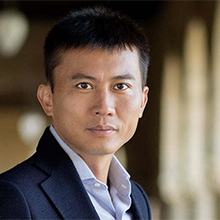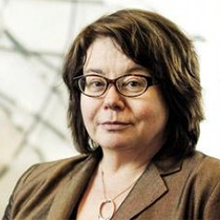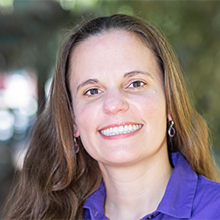How do you store electricity in a way that is large and powerful enough to support the electric grid, as well as reliable, safe, environmentally sustainable, and inexpensive? One way may be to make a major component of the rechargeable battery mostly from water and the rest of the device primarily from abundant materials.
That is the vision of dozens of the best energy storage experts from 15 research institutions across the United States and Canada, led by Stanford University and SLAC National Accelerator Laboratory. After a competitive process, the U.S. Department of Energy today announced its support for this energy hub research project, called the Aqueous Battery Consortium. The project can receive up to $62.5 million over five years as part of the DOE’s Energy Innovation Hubs program. The other battery-centered Energy Innovation Hub announced today by the DOE is the Energy Storage Research Alliance, led by Argonne National Laboratory.

“This project will undertake the grand challenge of electrochemical energy storage in a world dependent on intermittent solar and wind power. We need affordable, grid-scale energy storage that will work dependably for a long time,” said the project’s director, Yi Cui, a Stanford professor of materials science and engineering, of energy science and engineering, and of photon science at SLAC.
A huge amount of stationary energy storage will be needed to reduce net global greenhouse gas emissions to zero, said Cui, and water is the only realistic solvent available at the quantity and cost needed for such batteries.
“How do we control charge transfer between solids and water from the molecular to the device scale and achieve reversibility with an efficiency of nearly 100 percent?” asked Cui. “We don’t know the solutions to those hard problems, but with the Department of Energy's support we intend to find out.”
A new aqueous battery
The lead-acid batteries that start combustion engines in conventional vehicles are a type of aqueous battery that has been in wide use for decades. However, for their size, lead-acid car batteries do not hold much energy, even though they can briefly supply a surge of current to start your car.
Also, the lead in them is toxic. Of all lead produced globally, 85 percent goes into lead-acid batteries. Although new batteries mostly use lead from recycled ones, in many countries the recycling process relies on techniques that pollute the environment and hurt human health. One in three children suffer from lead poisoning globally, according to a 2020 UNICEF report, with much of the suffering in developing economies.
With such catastrophes in mind, the research team prioritizes environmental justice, as well as the vision of sustainable, affordable, and secure energy for all people. “We hope our inventions may someday benefit all of humanity,” said Cui.
The new research project aims to develop a new kind of aqueous battery, one that is environmentally safe, has higher energy density than lead-acid batteries, and costs one-tenth that of lithium-ion batteries today. The group plans to keep costs for this future technology low by using cheaper raw materials, simpler electronics, and new, efficient manufacturing techniques. The pursued technology is also expected to be safer, and to create batteries that charge and discharge quickly.

However, “the barriers to such a new aqueous battery have stymied inventors for years,” said the project’s chief scientist, Linda Nazar, a professor of chemistry at the University of Waterloo in Ontario, Canada. Nazar has developed new materials for energy storage and conversion for the past 20 years, including aqueous batteries. “In addition to stubbornly low voltage and energy density, water can corrode battery materials, become the source of undesirable side reactions, and the cells can fail after just hundreds of charge-discharge cycles under demanding practical conditions.”
The Aqueous Battery Consortium, which will be administered by Stanford’s Precourt Institute for Energy, hopes to overcome all these challenges and, in so doing, advance battery technology broadly. The team consists of 31 leading battery scientists, engineers, and physicists from 12 universities in North America, as well as from SLAC, the U.S. Army Research Lab, and the U.S. Naval Research Lab.
Project organization
The 31 co-principal investigators and the much larger number of students and postdoctoral scholars working with the investigators are organized into six teams working on broad research aims and three teams working on challenges that cut across those goals. The research Aims cover the electrolyte, both electrodes, electrolyte/electrode interface, corrosion, and overall device architecture. The three Crosscutting Theme teams will work on materials design and synthesis, coordinated theory and simulation, and characterization of prototype devices in operation.
To ensure collaboration and interdisciplinary thinking across the project, each researcher is on at least one of the six Aims teams and at least one of the Crosscutting Theme teams.

“Our ambitious goals can be met only by a well-integrated team of experts working across disciplines, who encourage each other to think from fresh angles and with novel viewpoints,” said Johanna Nelson Weker, the Aqueous Battery Consortium’s assistant director and lead scientist in SLAC's Stanford Synchrotron Radiation Lightsource division.
“One of the teams I’m on includes a couple of physicists, a professor of chemistry, and a professor of mechanical engineering, among other disciplines,” said Nelson Weker, “but all the researchers in the project have done much work on energy storage.”
Regular meetings of all consortium members and participation in various scientific forums should help create a large intellectual community of energy storage researchers. The consortium’s leaders hope this community will include not just the co-principal investigators, but also the scores of graduate students and postdoctoral scholars who will perform much of the research, and other battery scientists around the world. The researchers hope the Aqueous Battery Consortium will become a dynamic center for all aqueous battery research – not just its research – domestically and worldwide.
Management and oversight
The Aqueous Battery Consortium’s chief operations officer is Steve Eglash, director of the Applied Energy Division and interim chief research officer at SLAC. He is responsible for the organizational and administrative leadership of the project, including financial and personnel management, tracking and reporting research progress to the Department of Energy, environmental health and safety, and relationships with external partners.

“The Aqueous Battery Consortium is dedicated to doing the scientific research that will enable large-scale deployment of aqueous batteries," said Eglash. "The consortium will be accountable to a governance board and get external advice from two advisory boards. One will advise us on the scientific direction of our work. The other will advise us on the relevance of our work to commercial applications."
The project’s governance board will ensure institutional support and compliance. It will be led by Arun Majumdar, dean of the Stanford Doerr School of Sustainability, and professor of mechanical engineering, energy science and engineering, and photon science. Steven Chu, Nobel physicist and former U.S. Secretary of Energy, will helm the scientific advisory board. Chu, Stanford professor of physics, physiology, and energy science and engineering, is also one of the project’s researchers. Ira Ehrenpreis, co-founder and managing partner of the investment fund DBL Partners, will chair the technology review board. Ehrenpreis also co-chairs the Precourt Institute for Energy's advisory council.
“Also, to make sure we are doing things correctly and consistently across the project, several team members have taken on the responsibility for overseeing crucial practices. These include data management, technology transfer, environmental health and safety, and diversity, equity and inclusion,” said Eglash, who noted that five of the consortium's 12 universities are designated minority-serving institutions.
In addition to Stanford and the University of Waterloo, the other universities contributing investigators to this project are California State University, Long Beach; Florida A&M University/Florida State University's College of Engineering; North Carolina State University; Oregon State University; San Jose State University; UCLA; UC-San Diego; UC-Santa Barbara; University of Maryland; and University of Texas at Austin.
The co-principal investigators page on this website lists all senior researchers with links to their personal profile pages.
Cui is also the director of the Sustainability Accelerator at the Stanford Doerr School of Sustainability, the immediate past director of the Precourt Institute for Energy, current co-director of the institute’s StorageX Initiative and director of its postdoctoral program, as well as founder of a publicly traded battery company. Nazar is also a fellow of the Royal Society (Canada) and of the Royal Society (U.K.), as well as a Tier 1 Canada Research Chair in Solid State Energy Materials. Majumdar is also a senior fellow at the Precourt Institute and at the Hoover Institution. Ehrenpreis, an alumnus of Stanford’s Graduate School of Business and Stanford Law School, is also on Tesla Motor’s board of directors. The Precourt Institute is part of the Stanford Doerr School of Sustainability.
Media contact: Mark Golden, Communications Director, Precourt Institute for Energy and Aqueous Battery Consortium